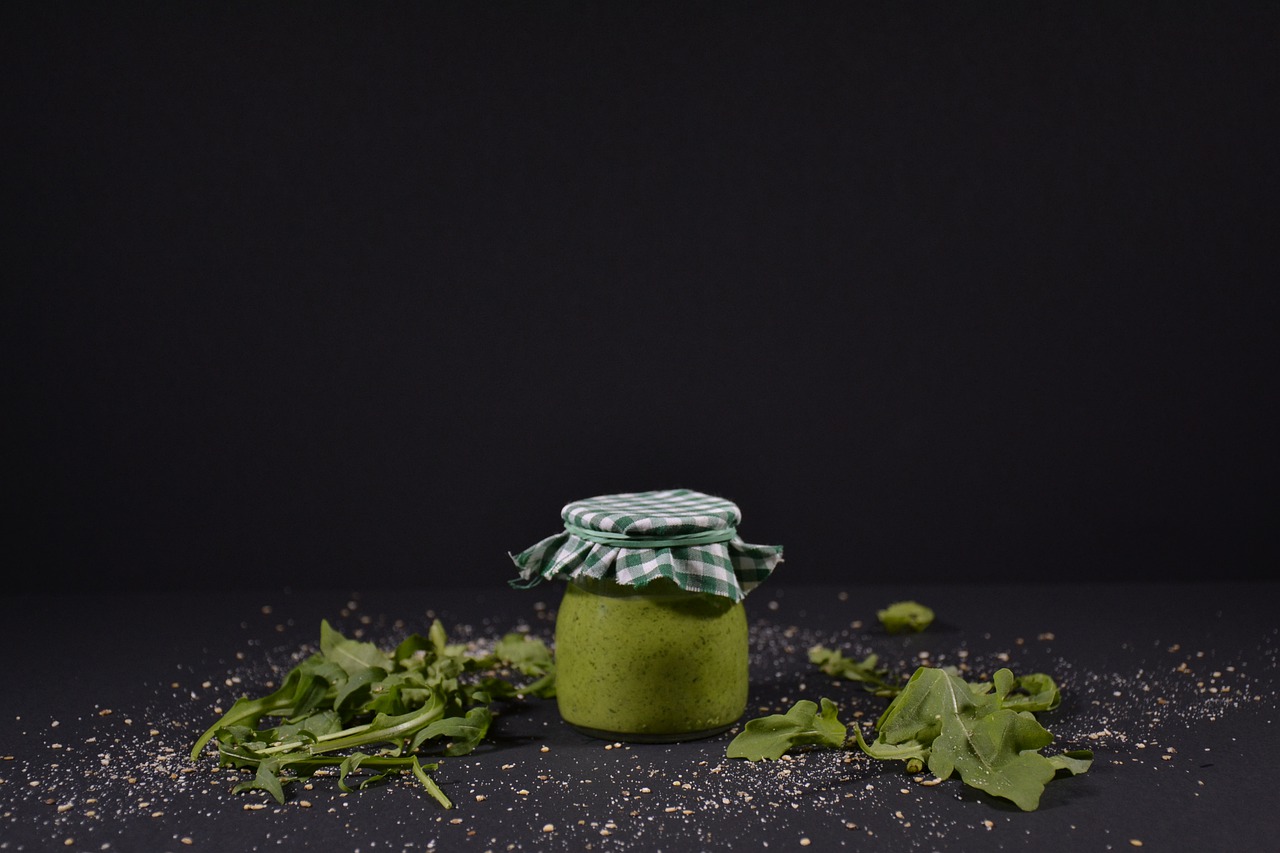
Pesto, a traditional sauce originating from Genoa, Italy, is a beloved condiment all around the world. Made with just a handful of simple ingredients, it’s a flavorful and versatile sauce that can be used in a variety of dishes, from pasta to sandwiches to pizzas. If you’re looking to make the perfect pesto, there are a few key things to keep in mind.
First and foremost, the ingredients you use. The traditional recipe calls for fresh basil, garlic, pine nuts, Parmesan cheese, and olive oil. While you can certainly experiment with different variations, using high-quality, fresh ingredients will make all the difference in the final product.
For example, always opt for fresh basil leaves rather than dried ones, as the latter will lack the bright, fragrant flavor of the former. Similarly, using freshly grated Parmesan cheese rather than pre-grated will give your pesto a richer flavor.
In terms of proportions, the classic ratio is roughly 2 cups of basil leaves to 1/2 cup of grated Parmesan cheese, 1/2 cup of pine nuts, 3 cloves of garlic, and 1 cup of olive oil. However, this is a guideline and everyone have different taste buds. You can adjust the amount of cheese, garlic, and pine nuts according to your preference. If you like pesto creamier then add more cheese, if you want to add more acidity, you can add lemon juice.
When it comes to actually making the pesto, a food processor is your best tool. Combine the basil leaves, pine nuts, garlic, and Parmesan cheese in the food processor and pulse until everything is finely chopped. With the motor running, slowly drizzle in the olive oil through the feed tube, continuing to pulse until the mixture comes together and forms a smooth paste.
One key to making perfect pesto is to not overwork the ingredients in the food processor. Pesto should have a nice texture, with small bits of ingredients still visible. Over processing will make the sauce too smooth and result in a loss of flavor and texture.
When it comes to storage, pesto should be stored in an airtight container in the refrigerator. Due to the cheese and the oil, it won’t last as long as other sauces, so it’s best to use it within a week. To help preserve the vibrant green color of the pesto, put a layer of plastic wrap directly on top of the pesto before sealing the container. It can also freeze in an airtight container or in ice cube trays for up to 3 months.
Pesto is a versatile condiment that can be used in a variety of dishes. One classic way to enjoy it is tossed with pasta and topped with grated Parmesan cheese. Another popular way is to spread it on crostini and top it with diced tomatoes for a delicious appetizer. Or simply mix it with some mayo for a delicious sandwich spread.
In conclusion, making the perfect pesto is all about using high-quality, fresh ingredients and being mindful of the proportions. With a little practice, you’ll be able to create a delicious, flavorful pesto that will elevate any dish it’s paired with.
Here’s a classic pesto recipe for you to try:
Ingredients:
- 2 cups of fresh basil leaves
- 1/2 cup grated Parmesan cheese
- 1/2 cup pine nuts
- 3 cloves of garlic
- 1 cup of extra-virgin olive oil
- Salt and pepper, to taste
Instructions:
- Start by prepping your ingredients. Rinse the basil leaves and dry them thoroughly. Peel and finely chop the garlic cloves.
- In a food processor, combine the basil leaves, pine nuts, garlic, and grated Parmesan cheese. Pulse until everything is finely chopped.
- With the motor running, slowly drizzle in the olive oil through the feed tube. Continue to pulse until the mixture comes together and forms a smooth paste.
- Season to taste with salt and pepper.
- Transfer the pesto to an airtight container and store it in the refrigerator for up to a week.
Remember to put a layer of plastic wrap directly on top of the pesto before sealing the container.
This recipe should make around 2 cups of pesto.
Play around with the recipe, some people like to add lemon juice for more acidity, or different kind of nuts to adjust the texture. As mentioned before the proportions are guidelines, you can adjust them according to your taste.



Leave a Reply